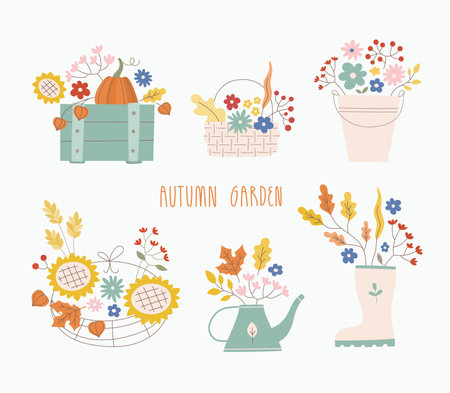Embracing Seasonality in British Gardens
British gardens are renowned for their deep connection to the changing seasons, a tradition that is woven into the fabric of English horticulture. The distinctive climate of the United Kingdom, with its marked shifts from spring’s gentle awakening to summer’s lush abundance, autumn’s vibrant decay, and winter’s quiet dormancy, provides both challenges and opportunities for gardeners. This cyclical rhythm is not only reflected in the choice of plants but also in garden design, maintenance routines, and even social customs such as open garden days and harvest festivals. Embracing seasonality means more than merely reacting to weather; it involves a conscious appreciation of nature’s patterns and an understanding of how each phase contributes to the health and beauty of the garden year-round. For generations, British gardeners have observed these transitions closely, adapting planting schemes and care strategies to enhance resilience and ensure continuous interest throughout the year. The cultural importance of seasonal change in England goes beyond aesthetics—its about harmony with the environment, celebration of local biodiversity, and a mindful approach to nurturing both land and community.
2. Foundations of Feng Shui in the Garden
Feng Shui, at its core, is the ancient Chinese art of arranging spaces to harmonise individuals with their environment. While traditionally applied indoors, its guiding principles translate remarkably well to outdoor spaces — especially when considered within the framework of an English garden. For British gardeners keen on nurturing both aesthetics and wellbeing throughout the changing seasons, understanding these foundational elements offers a practical and inspiring approach.
Key Principles Tailored for Outdoor Spaces
At the heart of Feng Shui are several core concepts: balance (Yin and Yang), flow of energy (Qi), the five elements, and harmonious placement. In an English garden context — whether you’re tending a cottage plot or a modern patio — these principles can be interpreted in a manner that respects both tradition and local character.
| Feng Shui Principle | Outdoor Application | English Garden Adaptation |
|---|---|---|
| Yin & Yang | Balance shaded (yin) and sunny (yang) areas | Mingle lush borders with open lawns |
| Qi Flow | Create gentle curves in paths and beds to encourage movement of energy | Avoid rigid lines; use winding gravel paths or informal hedges |
| Five Elements | Integrate wood, fire, earth, metal, and water features | Add timber benches, terracotta pots, metal ornaments, stone walls, and water butts or ponds |
| Bagua Map | Divide the garden into zones for different life aspects (e.g. health, relationships) | Assign corners for relaxation (health), seating for gatherings (relationships), veg patches for wealth |
The Relevance of Feng Shui to British Gardens
The adaptability of Feng Shui lies in its flexibility — rather than imposing a rigid aesthetic, it encourages working with existing features and local materials. Traditional English gardens often emphasise seasonality, wildlife habitats, and a blend of formality with wildness. By applying Feng Shui’s guidance on flow and balance, gardeners can enhance not only visual appeal but also support biodiversity and personal wellbeing.
Seasonal Sensibility Meets Practicality
Incorporating Feng Shui need not mean dramatic redesigns or introducing exotic elements. Instead, think about how classic British features — such as stone pathways, herbaceous borders, or even an old apple tree — can serve dual purposes: fulfilling traditional garden roles while also supporting energetic harmony. This approach ensures that your garden remains distinctly English yet subtly enriched by this time-honoured philosophy.

3. Aligning Your Garden to the Flow of Chi
Applying Feng Shui principles to an English garden is not simply a matter of aesthetics—it is about creating an environment where energy, or chi, can circulate freely and nourish all living things throughout the year. This process begins with a mindful arrangement of garden features, paths, and beds, which should be attuned to both seasonal change and the practical realities of the British climate.
Curved Paths for Gentle Energy Movement
Traditional Feng Shui encourages the use of winding paths rather than straight lines, as curves help slow and harmonise the flow of chi. In the context of English gardens, this aligns beautifully with established local preferences for gently meandering gravel walkways bordered by herbaceous perennials or clipped box hedges. Avoid rigid symmetry; instead, let your pathways lead visitors on a subtle journey through varied plantings, pausing at focal points such as a stone bench or birdbath to encourage moments of reflection and connection with nature.
Positioning Beds and Borders
When laying out beds and borders, consider their relationship to sunlight, shelter, and prevailing winds—fundamental factors in UK gardening. Place taller structural plants or hedges to shield more delicate species from harsh winds while ensuring that no single feature blocks light entirely from another area. Beds should follow gentle curves and avoid sharp corners; this not only looks softer but also invites energy to flow naturally around each planting area. Raised beds edged with brick or timber echo traditional British materials and provide clear yet unobtrusive boundaries that guide chi without impeding it.
Water Features and Focal Points
Water features are central in Feng Shui for attracting positive energy. In an English setting, a small pond with native water lilies or a discreet recirculating fountain can be positioned so that it draws the eye from a terrace or conservatory window. Place these features in the east or southeast areas of your garden if possible—this is believed to promote health and prosperity. Avoid stagnant water; ensure any feature remains clean and gently moving to keep energy fresh throughout all seasons.
Local Materials and Seasonal Adaptation
Utilise local materials such as reclaimed York stone paving, weathered timber, or traditional red bricks to create harmony between garden features and the wider landscape. As the seasons shift, adapt mulches, supports, and containers so pathways remain clear and inviting—consider winter-hardy evergreens near entrances for year-round structure, and rotate seasonal planters to maintain visual interest along main routes.
By thoughtfully aligning your garden’s layout with both Feng Shui concepts and familiar English design sensibilities, you create a space that feels welcoming in every season—a sanctuary where energy flows easily and each element has its rightful place.
4. Seasonal Adjustments: Adapting Planting and Features
The British climate is famously changeable, demanding a flexible approach to gardening that aligns with both nature and the principles of Feng Shui. While Feng Shui encourages balance and harmony, it’s equally vital to respect the realities of the UK’s seasons—adapting your garden to thrive throughout the year. Here’s how you can select plants and adjust outdoor features, ensuring positive energy flows regardless of the weather.
Choosing Plants for Year-Round Balance
Feng Shui emphasises the five elements—Wood, Fire, Earth, Metal, and Water. Each season in Britain offers opportunities to highlight these elements through plant choice and placement. Use hardy, native species that handle frost and rain, while providing visual interest for each season.
| Season | Feng Shui Element | Recommended Plants |
|---|---|---|
| Spring | Wood | Daffodils, Bluebells, Hawthorn |
| Summer | Fire | Lavender, Roses, Crocosmia |
| Autumn | Earth | Sedum, Japanese Anemone, Ornamental Grasses |
| Winter | Metal/Water | Holly, Hellebore, Dogwood (Cornus) |
Adapting Garden Features with the Seasons
The UK’s wet winters and cool springs mean drainage and shelter are essential. Use Feng Shui guidance to place benches or water features where they can be enjoyed but protected from prevailing winds. In summer, open up seating areas to welcome sunlight; in winter, shield them with evergreen hedges or windbreaks.
Tips for Seasonal Adjustments:
- Rotate pots with seasonal blooms near your front door for a steady flow of auspicious energy.
- Add mulch in autumn to protect soil health—a nod to Earth energy.
- Use wind chimes or metallic planters in winter to activate Metal energy without risking fragile plants.
Practical Considerations for UK Gardens:
- Select frost-resistant containers for exposed spots.
- Pave paths with permeable materials to cope with heavy rainfall.
- Install rainwater collection barrels—not just eco-friendly but also a boost for Water energy in Feng Shui terms.
This mindful combination of plant selection and feature placement ensures your garden remains vibrant and energetically balanced all year round—perfectly marrying Eastern wisdom with British practicality.
5. Celebrating British Traditions with Feng Shui Elements
British gardening has a deep-rooted heritage, from the quintessential herbaceous borders of country estates to the cherished community allotments and wildlife-friendly sanctuaries found throughout villages and towns. Integrating Feng Shui principles into these beloved traditions offers a new perspective on harmony and balance, without sacrificing local character.
Enhancing Herbaceous Borders with Water Features
The classic English border—filled with perennials in soft drifts—can be subtly transformed by introducing a water element. A small pond or gently bubbling fountain at the border’s end not only supports wildlife but also embodies Feng Shui’s water energy, symbolising abundance and flow. This addition brings both movement and reflection, creating a tranquil focal point that enhances the sensory experience of a walk through the garden.
Elevating Allotments with Wind Chimes
Allotments are at the heart of many British communities, combining productivity with social connection. By adding wind chimes crafted from bamboo or recycled metal near entrance gates or tool sheds, gardeners can encourage positive chi (energy) while respecting the practical nature of these plots. The gentle sound serves as a reminder of mindfulness and presence during daily tasks, aligning with the ebb and flow of seasonal planting.
Defining Wildlife Gardens with Natural Dividers
Wildlife gardens are increasingly popular across Britain, providing havens for pollinators, hedgehogs, and birds. Incorporating natural dividers such as woven willow fences or dense hedgerows aligns seamlessly with both British tradition and Feng Shui’s emphasis on boundary and protection. These structures channel movement within the garden space, guide visitors gently, and offer shelter for wildlife—all while reinforcing the garden’s sense of place.
Bridging Cultures Through Garden Design
Ultimately, weaving Feng Shui elements into traditional British gardening practices is not about replacing what exists but enhancing it. By thoughtfully integrating features like water, sound, and organic boundaries, gardeners celebrate both cultural heritage and universal principles of harmony—creating spaces that feel uniquely local yet subtly connected to a wider world of design philosophy.
6. Practical Tips for Every Season
Spring: Invigorate with Fresh Energy
Checklist:
- Clear away winter debris and dead foliage to allow fresh Qi to circulate.
- Plant early-blooming bulbs and perennials to symbolise renewal and new beginnings.
- Incorporate water features or birdbaths in the east sector to invite growth energy.
- Balance vibrant colours—like daffodils and tulips—with gentle greens to harmonise the space.
Ideas:
Use wind chimes or gently spinning ornaments in breezier spots to encourage movement and dispel stagnant energy. Refresh paths and tidy borders, honouring the British tradition of neat garden edges while aligning with Feng Shui’s call for clear, unobstructed flow.
Summer: Celebrate Abundance and Activity
Checklist:
- Prune shrubs and hedges to maintain a sense of order without stifling natural growth.
- Add bursts of red or orange blooms—such as poppies or geraniums—to activate the south sector for fame and joy.
- Position seating areas in shaded spots for social harmony, inviting friends for tea outdoors.
Ideas:
Create winding paths that slow movement through lush borders, encouraging mindful enjoyment of scent, sound, and colour. Use mirrors or reflective surfaces to amplify light in shaded corners, blending classic English charm with Feng Shui principles.
Autumn: Prepare for Rest and Reflection
Checklist:
- Harvest remaining fruits and vegetables, sharing surplus with neighbours—supporting community spirit (Ren).
- Add mulch to beds to protect roots and enrich soil, symbolising care for future growth cycles.
- Display autumnal decorations (gourds, lanterns) at entrances to invite positive energy as days shorten.
Ideas:
Rake leaves regularly but leave small piles in tucked-away corners for wildlife—a nod to both ecological balance and the Feng Shui value of nurturing all life forms. Prune back annuals but keep some seed heads as food for birds through winter.
Winter: Protect, Rest, and Plan Ahead
Checklist:
- Tidy up fallen branches and secure loose structures against storms—maintaining safety and calm Qi flow.
- Add evergreens or winter-flowering plants (like hellebores) for year-round vitality, especially near entrances.
- Clean water features thoroughly; keep them covered if not in use to prevent negative energy accumulation.
Ideas:
Place simple lanterns along pathways or porch steps to create a warm welcome during dark evenings—a practical British touch that also enhances Yang energy according to Feng Shui. Start planning next year’s layout now, reflecting on what brought harmony this year and what can be improved upon.
A Year-Round Mantra
No matter the season, observe your garden’s changing character closely. Blend English gardening traditions—seasonal rotation, wildlife-friendly practices—with mindful Feng Shui adjustments. The aim is always balance: between structure and wildness, colour and calm, activity and rest. With these seasonal checklists as your guide, your English garden can become a true sanctuary throughout the year.


